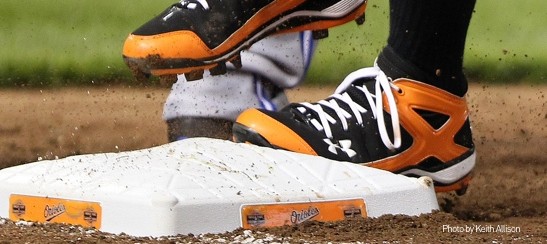How to Test If Your Shoes Are Supporting Your Needs
Do you remember the last time you looked for new shoes/cleats? With such a wide selection to choose from and so many marketing messages telling you what to buy, it seems impossible to walk away with the best fit for you.
How can you even tell if your shoes are supporting your needs? Is it possible to know whether or not you are purchasing the correct shoe to support you in your specific activities?
The general rule of thumb when it comes to selecting the proper shoes is the “3 F’s” — function, fit, and feel.
Function
When it comes to shoe selection, function defines the shoe that’s design best coincides with your foot’s natural motions that emerge from your specific biomechanics and body weight. The importance of function connects closely with your walking motion. Do you “supinate”? That is, when you walk, does your weight tend to balance over the middle to outside portion of your foot?
On the other end, are you an “over-pronator”? That is, does your foot roll inward after you’ve placed your weight on your foot during a step? While this motion is natural, too much pronation can be problematic.
Lastly, weight can be a key factor in function. Athletes with extra muscle weight might need to consider some extra padding in their shoes.
Fit
Once you’ve narrowed down the functional aspect of the shoe, it’s important to select the right fit. Fit seems like an easy answer — either it fits or it doesn’t. But, many don’t take into account the changes that occur during peak physical activity. Simply put, your foot will swell during peak activity. If you’ve selected your shoe for a snug fit in a store, you might be surprised that it’s giving you discomfort on the playing field. You want to give yourself enough length, width, and depth in your shoe to plan for this swelling to occur, the general rule of thumb being — well a rule of thumb. You want the length of your thumbnail in extra space all while making sure the shoe is snug and your foot isn’t sliding around.
Feel
Feel comes down to you. Much like strumming multiple guitars to find the “right” one for you — or laying down on a few pillows to get a sense of preference, trying on your shoes should give you the final component of the test. If they’re functional, and they fit, but they aren’t comfortable, then the shoe is a “no-go.” It’s best to try on different shoe brands so you can get a sense of preferences. How much do you want the shoe to weigh? How breathable do you want it? How flexible do you want it? All of these aspects come together to give you a sense of the feel.
Next Time
So next time you’re going through the shoe buying process, remember the 3 F’s — function, fit, and feel. They give you the clarity to know what will work for you and what won’t, ultimately, so you can get on the field and perform to your greatest potential.



